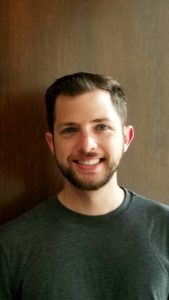
Finding Medicine Again
Growing up, I watched as my parents touched the lives of community members in our small country town through their medical practice. Every trip to the grocery store was like doing rounds. Everyone would approach and tell me stories of how my parents helped cure their illness or helped their loved one pass on. They all expressed gratitude toward the great time my parents took to help them. This is what led me to choose a career in medicine as well.
In medical school I saw a different side of medicine than what I remembered of my parents’ practice. I saw why my parents left their beloved general practice for specialties. I saw physicians spending the majority of their time in clinic staring at screens and clicking buttons. Even when with patients in the room, the time was spent looking at a screen. Patients were given a limited time of 5 minutes with the physician and were encouraged to limit their 3 complaints to the single one that was the worse. I saw physicians that were clearly overworked with double and triple booked schedules; their integrity taken advantage of until they complied with the push of treating an ever-expanding volume of patients was met over the physician’s enjoyment of practicing medicine.
I began to worry that I had made a poor decision in choosing a medical career. This style of medicine was something I was beginning to believe I couldn’t do. The style of medicine I was seeing was immoral and not the type of medicine I had dreamed of practicing. I saw physicians having to bend over backwards in order to meet the demands of insurance companies that knew little about medicine. Years of training and medical expertise were being ignored for the high school graduate’s formula for the next steps to take. The payments held hostage in order to force compliance.
Luckily early in my second year of medical school I found my calling. I saw Dr. Josh Umbehr’s video at AAPS talking about his direct primary care (DPC) practice. It was a simple model of entrepreneurship. The patient pays the physician directly for access to the doctor. And with this payment model the patient is in more control over the quality of care, the physician is able to provide more time with the patient and better meet their needs with the middleman cut out. A medical practice under the direct primary care model is able to meet the “Triple Aim Plus One” easily. With the DPC model care is provided at low cost, high quality, same or next day access, and with physician job satisfaction. The end of June marked my second trip to the DPC Summit. There I met physicians from all over the country utilizing the free market system to better the health of their patients and enjoy their careers again. This year I shared my experience at the summit with my parents and helped them find the style of medicine they knew from so many years ago.
As I enter my 4th year of medical school now, I know that I will be starting my own DPC practice in the Central Illinois town where I first fell in love with medicine. Here’s to counting down the next 4 years with the knowledge my practice will give me great satisfaction and provide great care to all.
Ben Hauter, 4th year medical student, Southern Illinois University School of Medicine, is a recipient of a BRI Student Member Scholarship.
